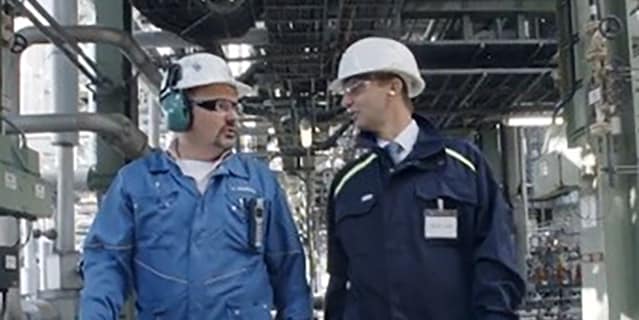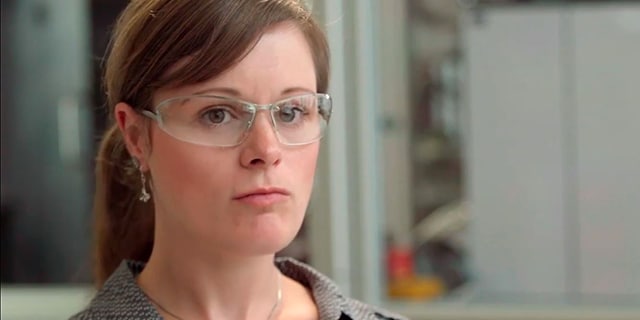Shaping the Future with Reliable Microreactors

How a Leading Microreactor Manufacturer is Embracing the Challenge of Empowering the World's Chemists
Microreaction technology has developed into an exciting tool for use in modern industrial production, chemical engineering, and process engineering across the globe. Its use is growing in a variety of industries, including pharmaceuticals, industrial chemical production, food and life sciences, and much more.
Ehrfeld Mikrotechnik, a leading German provider of high-quality microreactor systems that play a key role in flow chemistry applications, is on the forefront on microreactor technology development. Now that microreactor technology has matured, Ehrfeld’s reactors are expected to operate in industrial environments on production scale without compromise.
How does Ehrfeld Mikrotechnik meet such a challenge? We sat down with Dr. Rafael Kuwertz, project manager at Ehrfeld Mikrotechnik, to find out how they deliver high reliability for their customers with the help of fluid system professionals at Swagelok Frankfurt.
Swagelok Reference Point (SRP): Thanks for joining us today, Dr. Kuwertz! Can you start by telling us a bit about some of the applications that Ehrfeld addresses with its products?
Dr. Rafael Kuwertz: It’s my pleasure. Ehrfeld offers a unique Modular MicroReaction System (MMRS) corresponding to the unit operations in a typical industry process. Our modules use an integrated scale-up concept that helps easily transfer the scale of industrial chemical production processes.
The majority of our international customers are involved in the specialty chemical and pharmaceutical industries, and our reactors can be used in a range of demanding processes. The pharmaceutical industry is especially interested in our technology’s highly efficient heat exchange and fast mixing, which result in defined and reproducible results, simplified process control, and minimized delays. For the chemical industry, our microreactor technology helps with important reactions that are often difficult to handle—things like peroxide reactions, ethoxylations, hydrations, ozonolysis, and more. But we also have projects with food and life science companies where we worked with ice cream, yogurt, skin cream, or hair care products.
Our team often installs the MMRS at our customers’ sites. Here we face the challenge of integrating our microreactor system into many different infrastructures—we need connections that are adaptable for every situation. To overcome those challenges, we have worked with Swagelok Frankfurt for the past ten years.
“There is virtually no connection that cannot be made with Swagelok tube fittings.”
SRP: That sounds challenging indeed. How has your relationship with Swagelok taken shape?
Dr. Kuwertz: My personal experience with Swagelok dates to my master’s and Ph.D. work, where my fellow students and I assembled all our experimental setups using Swagelok components. In our work with Swagelok products today, I have found that there is virtually no connection that cannot be made with Swagelok tube fittings. This has always been a great advantage, especially when you need to connect various instruments, sensors, and reactors in a reliable and professional manner.
This kind of standardization remains immensely helpful in our day-to-day work during customer installations. Additionally, we can ensure high standards of process safety and quality necessary for our test facilities dealing with toxic and flammable gases and temperatures above 300 C°. We expect these conditions to grow only more challenging as our firm continues to innovate.
SRP: Microreaction technology can help with a wide variety of different processes. What kinds of applications are you working with on a regular basis, and what are some of the challenges you commonly encounter?
Dr. Kuwertz: The challenges we face include persuading customers to invest time and money in this new microreactor technology, conducting virtually every type of chemistry in our reactor system, and meeting customer expectations. For example, part of my job is to conceive and assemble test plants tailored to the client’s requirements and within the shortest amount of time possible.
“High-quality stainless steels, and in some cases more exotic alloys, are often a necessity to prevent corrosion issues.”

High-quality stainless steels, and in some cases more exotic alloys, are often a necessity to prevent corrosion issues. For example, when working with ozonolysis of olefinic organic compounds, which we have successfully conducted several times, Hastelloy® C components helped us avoid any corrosion concerns.
“Every connection uses standard Swagelok components, helping us ensure that we can integrate our system with the different infrastructures.”
SRP: Your reactors are very flexible. Why is modularity so important for you?
Dr Kuwertz: We’re convinced this modularity is the key to our success because you can quickly and easily adapt the system to the process. Imagine a multistep synthesis that you can split into separate operations and optimize each 
Integration is also straightforward for newly developed or modified modules. All our components can be individually disassembled, and cleaning is very easy. Every connection in our microreactor system uses standard Swagelok components, helping us ensure that we can integrate our system with the different infrastructures present at our customers’ sites.
SRP: What does the future hold for Ehrfeld?
Dr. Kuwertz: We’re looking forward to further developing our technology and making progress in new and expanding markets like China, India, and Russia, which we expect to do with help from Swagelok. We set up a subsidiary in Shanghai to support the Chinese market, for example, where companies are motivated to establish new production plants that meet strict safety requirements and small footprints.
Many of our clients around the world are familiar with Swagelok components. Therefore, the setup of our plants becomes more efficient—even when you are in contact only via phone or video conference calls, as we have been throughout the pandemic. Nevertheless, we hope to be able to personally visit our customers again very soon, with our system and a toolbox full of Swagelok fittings.
***
Interested in learning more about how Swagelok components can form reliable connections in your applications? Our fluid system specialists are happy to help. Get in touch with your local Swagelok sales and service center to start a conversation.
Related Articles

Improving Lab Safety and Productivity
Learn why optimized gas distribution systems are critical for maintaining the safety and productivity of laboratories.

INEOS Petrochemical Safety Case Study
Swagelok’s contribution to the safe operation of INEOS’s petrochemical facility in Cologne, Germany maps back to the close collaboration between the two companies. Learn how Swagelok’s trusted reliability helps INEOS ensure petrochemical safety.

Speeding the Production of Catalyst Testing Systems for Integrated Lab Solutions
Learn how Swagelok’s solutions-driven associates and quality fluid system components helped speed the production of catalyst testing systems for Integrated Lab Solutions, a Berlin-based manufacturer of automated testing equipment.

